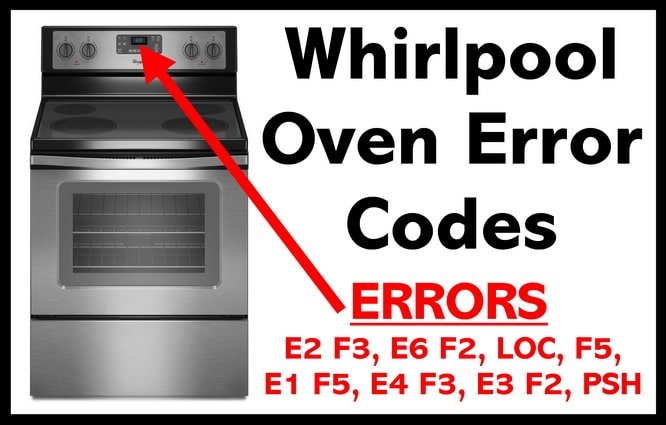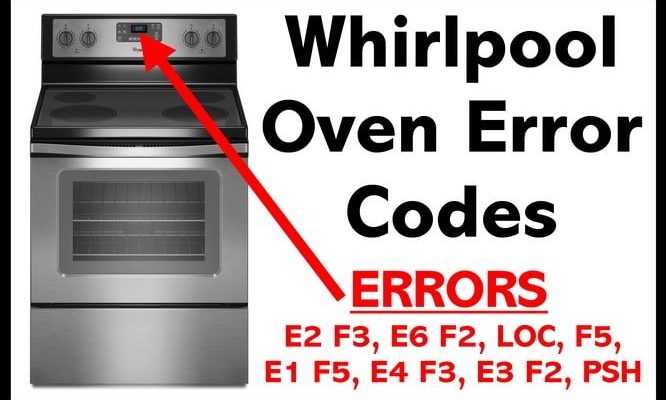
Imagine your Whirlpool oven or range is like a computer. Just like how computers can throw up error messages when something goes wrong, your oven does the same to alert you to potential issues. The “E3” error code is essentially your appliance’s way of saying, “Hey, something’s not quite right here!” It’s important to understand what this means so you can make informed decisions about whether you should continue using the oven or call for help.
Here’s the deal: the E3 error code is generally an indicator that there’s a problem related to the temperature sensor. Think of the temperature sensor as the oven’s thermostat, which keeps everything running smoothly by maintaining the right temperature. If this gets out of whack, it could mean your oven isn’t heating correctly. The good news is, in most cases, this isn’t a catastrophic failure, but it does warrant a bit of attention to ensure your appliance continues to operate safely and efficiently.
Understanding the E3 Error Code
The E3 error code on a Whirlpool oven or range is primarily associated with the temperature sensor circuit. This component plays a critical role in your oven’s functionality. Picture your oven like a cozy room with a thermostat on the wall. The thermostat (your temperature sensor) monitors the temperature inside and adjusts the heat to keep things just right. When it doesn’t work as expected, your oven’s internal temperature could fluctuate unexpectedly or not reach the desired level. This is basically what’s happening when an E3 error pops up.
In a technical sense, the E3 error indicates that the oven is either measuring a temperature that’s too high or too low compared to what it should be. This could happen due to a faulty temperature sensor, loose wiring, or even a glitch in the oven’s control board. The metaphorical thermostat might not be communicating properly, leading to the appliance’s confused state.
The implications of this error can vary. Sometimes, it may mean your food isn’t cooking evenly, or it might not cook at all. More critically, if the oven overheats, it could pose a safety risk, like causing burns or, in rare cases, fire hazards. Keeping your kitchen safe means addressing these issues promptly before they escalate.
Steps to Take When You See an E3 Error
First and foremost, if you’re not familiar with appliance repair, it’s wise to avoid attempting any DIY fixes on your own. But don’t worry—there are some basic troubleshooting steps you can follow to get a better sense of what’s causing the issue.
Start by checking for any visible signs of damage or disconnection in the oven’s wiring. Like a poorly plugged-in lamp that flickers uncertainly, a loose wire in your oven can cause inconsistent temperature readings. Turn off the appliance and, if possible, gently inspect the wires connected to the temperature sensor.
If you don’t spot anything obvious, the next step is to carefully reset your oven. This is similar to rebooting your computer when it gets a bit glitchy. You can do this by unplugging the appliance or turning off the circuit breaker for a few minutes, then switching it back on. Sometimes, this simple reset is enough to clear the error if it was a minor electronic hiccup.
However, if the E3 error persists, it’s time to call in the professionals. Get in touch with a certified technician or Whirlpool support. They have the expertise to diagnose and fix the problem, ensuring your oven is back in tip-top shape. Remember, when in doubt, it’s always better to be safe than sorry.
Preventing Future Errors
Preventing an E3 error from making a repeat appearance is all about good maintenance and care. Think of it like taking care of a car—regular check-ups can keep everything running smoothly. For starters, make a habit of keeping your oven clean and ensuring that no food particles or debris are falling into hard-to-reach places that might compromise functionality.
It’s also a good idea to periodically inspect the oven’s seals and gaskets. These components can wear out over time and might affect the oven’s ability to maintain consistent temperatures, much like a drafty door can make keeping a room warm difficult. If you notice any damage, address it promptly to prevent further issues.
Moreover, consider having your oven inspected by a professional at least once a year. They can catch any potential problems early on, saving you from unexpected hassles down the line. Being proactive in this way can extend the lifespan of your appliance and keep your kitchen running smoothly.
In conclusion, while seeing an E3 error code on your Whirlpool oven or range might initially seem daunting, understanding its meaning and taking appropriate actions can alleviate concerns. Always prioritize safety, don’t hesitate to reach out to professionals for help, and maintain your appliances to prevent future hiccups. With these steps, you’ll ensure your kitchen remains a safe and efficient place for all your culinary adventures.
